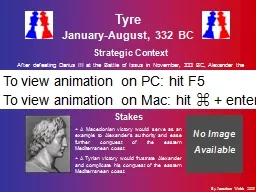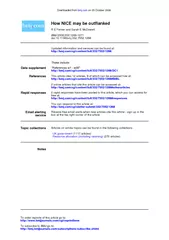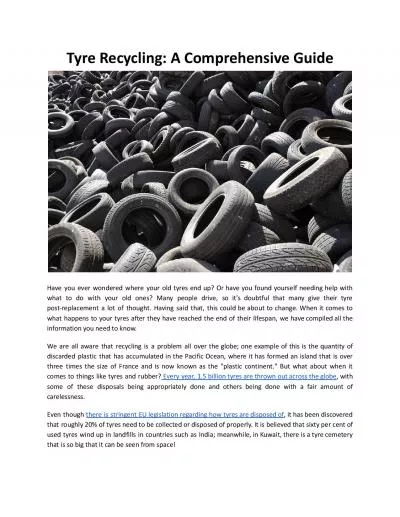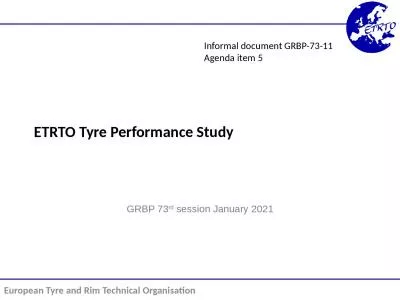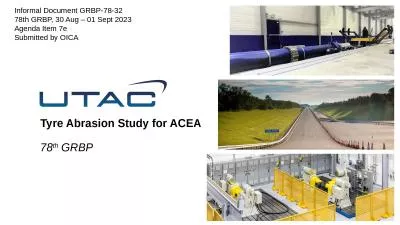PPT-Tyre January-August, 332 BC
Author : cheryl-pisano | Published Date : 2018-11-02
Strategic Context After defeating Darius III at the Battle of Issus in November 333 BC Alexander the Great is able to march down the eastern Mediterranean coast
Presentation Embed Code
Download Presentation
Download Presentation The PPT/PDF document "Tyre January-August, 332 BC" is the property of its rightful owner. Permission is granted to download and print the materials on this website for personal, non-commercial use only, and to display it on your personal computer provided you do not modify the materials and that you retain all copyright notices contained in the materials. By downloading content from our website, you accept the terms of this agreement.
Tyre January-August, 332 BC: Transcript
Download Rules Of Document
"Tyre January-August, 332 BC"The content belongs to its owner. You may download and print it for personal use, without modification, and keep all copyright notices. By downloading, you agree to these terms.
Related Documents

